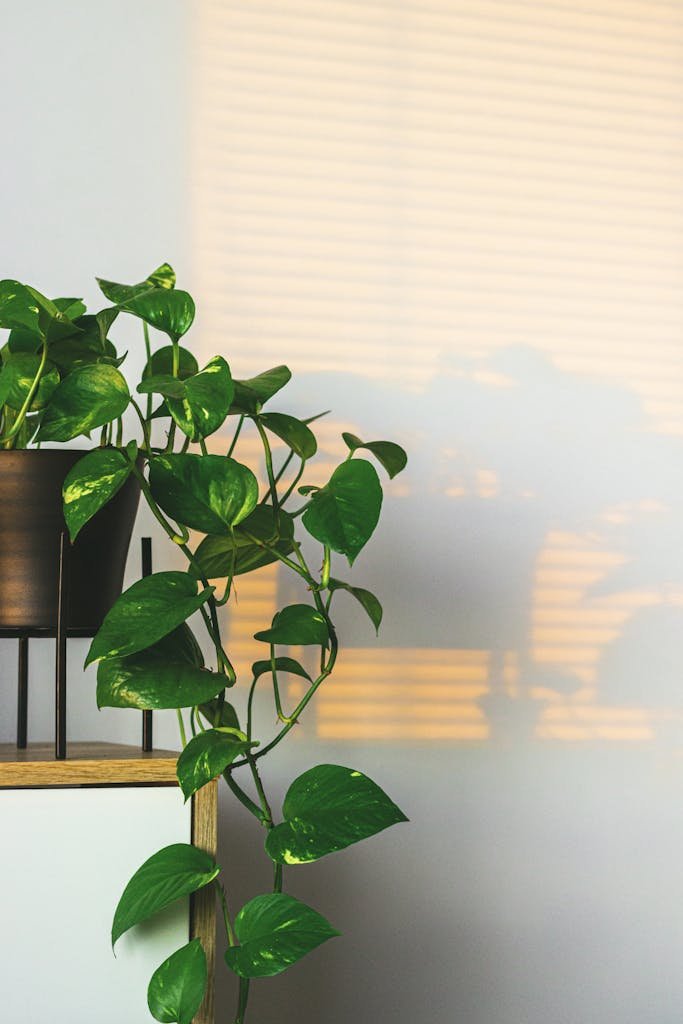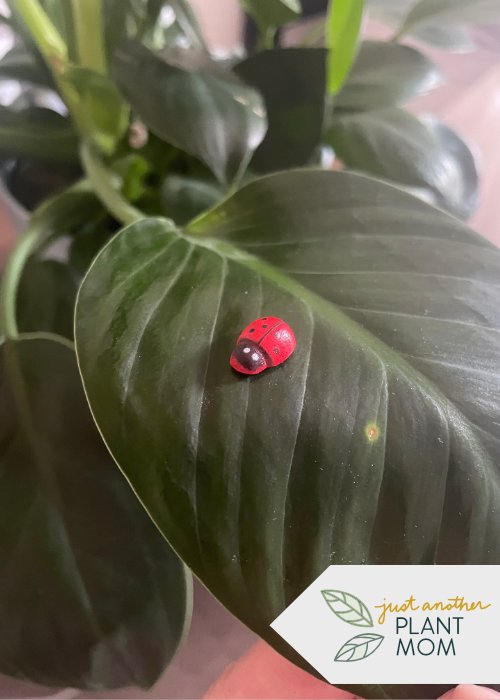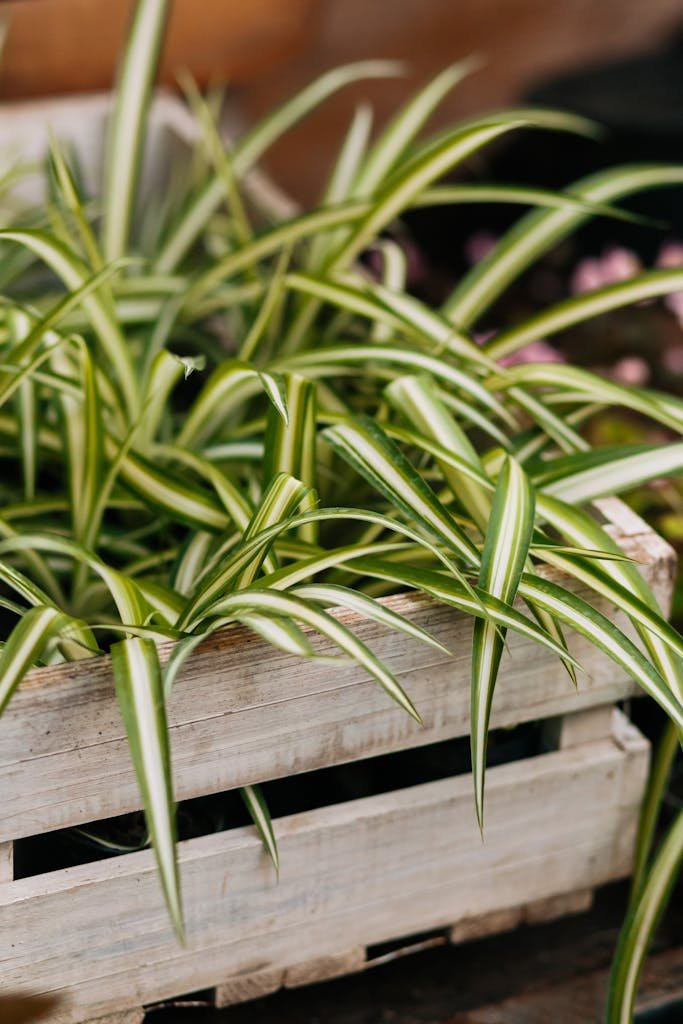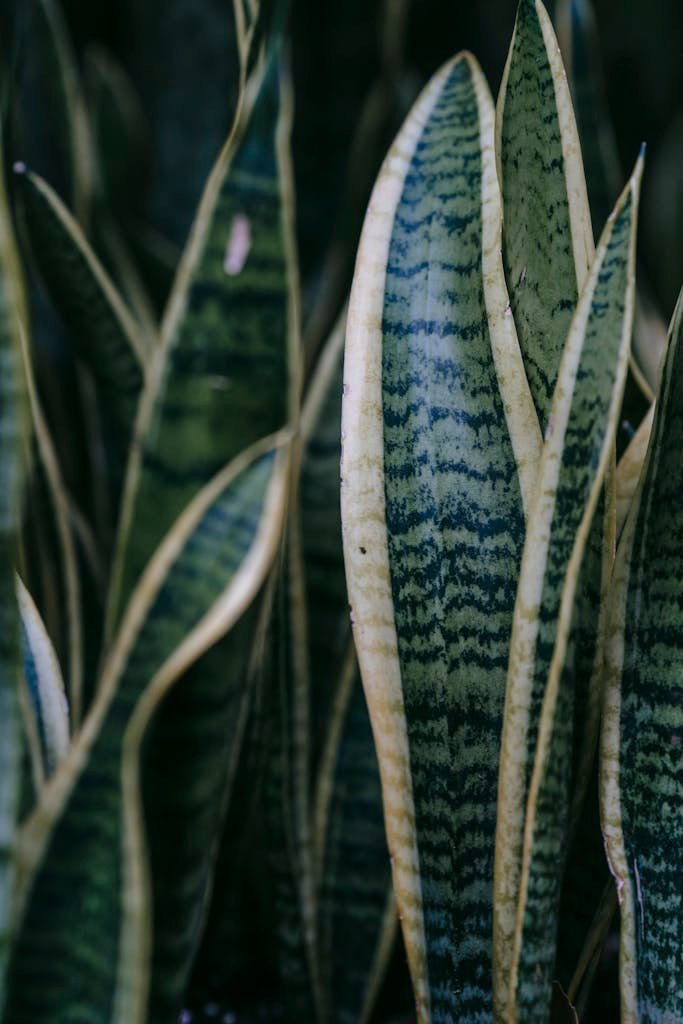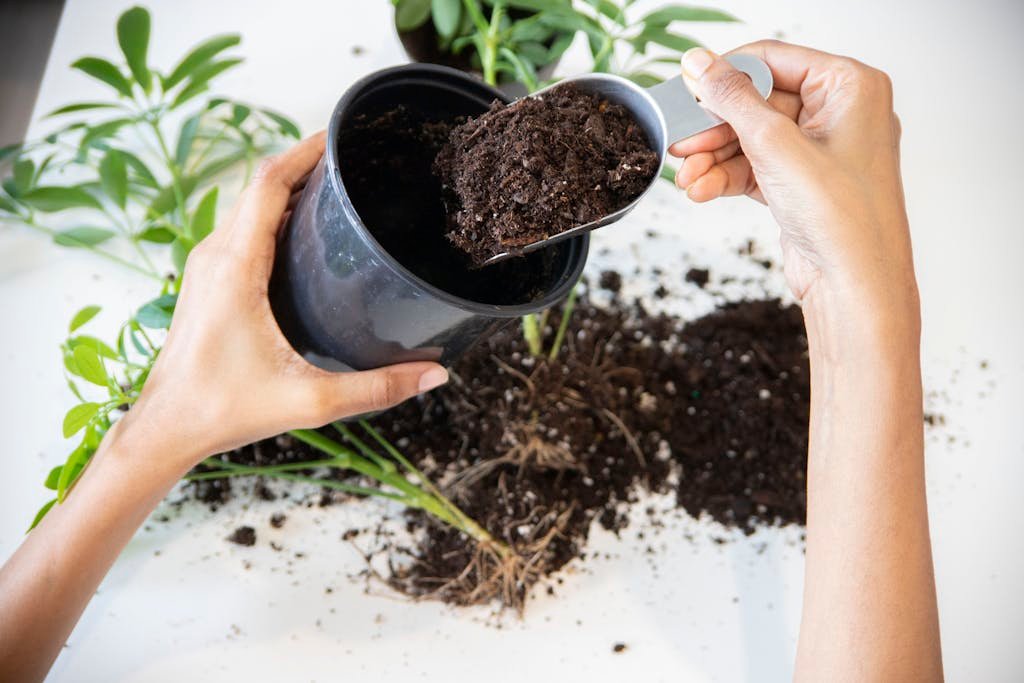The complete guide to caring for your pothos plant
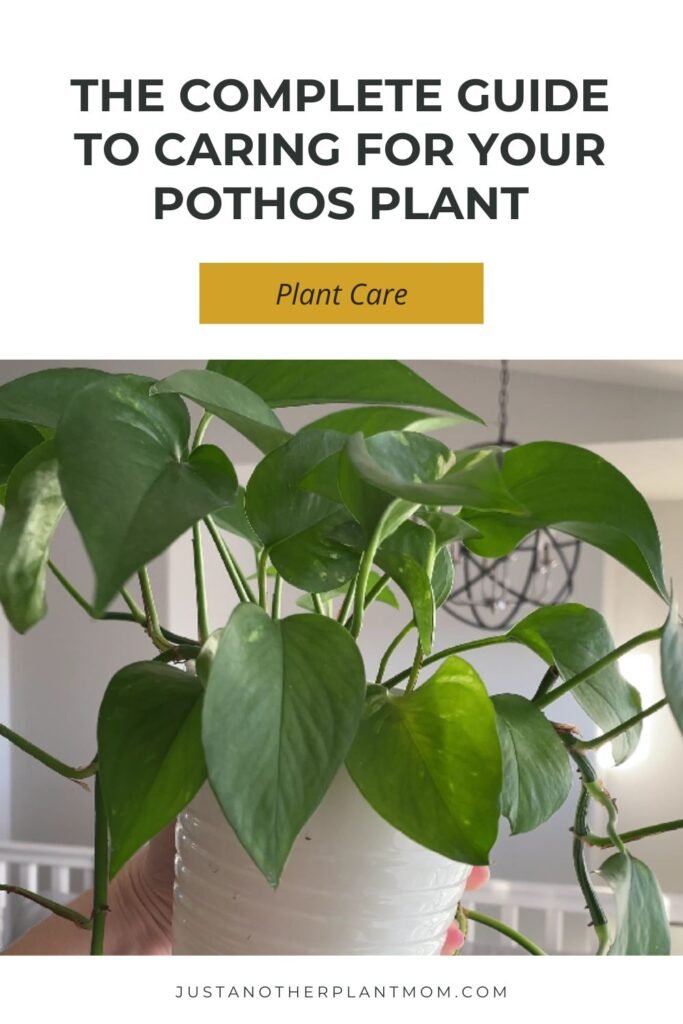
If you’re a beginner plant parent, or just love plants in general, then you need a pothos plant in your life! Pothos are one of my favorite plants. They’re easy to care for, grow quickly and have many varieties that are oh-so-aesthetic with their long trailing vines!
The pothos plant (Epipremnum aureum aka devil’s ivy, golden pothos, or money plant) originated from Southeast Asia and is a member of the Aroid family. It has heart-shaped leaves that vary in color from deep green to variegated shades of green, white and yellow that can cascade down from hanging baskets or climb a trellis or other support.
Not only is the pothos plant super cute, it might even help to purify your air! Studies have shown that they can help remove toxins such as formaldehyde, benzene, and trichloroethylene from indoor air. In fact, the pothos is one of several plants that NASA included in its Clean Air Study, which aimed to identify plants with the ability to remove indoor air pollutants. (Note: NASA’s study looked at plants in a sealed environment, not a regular home, and you would likely need hundreds of plants for this to be effective in your home—but hey, it’s still cool!)
Pothos varieties
There are several varieties of pothos, each with its own unique leaf coloration and pattern. These are not natural to the species, but instead developed by horticulturalists. I’ve come across some lists that say there are 18 varieties and others that list 23 varieties…but here are some of the most common varieties that you might come across:
- Golden pothos (Epipremnum aureum): This is the original species and is probably the most common and well-known variety of pothos. It features heart-shaped leaves with glossy, marbled patterns of green and yellow.
- Marble queen pothos: Similar to Golden pothos but with even more pronounced variegation, and leaves that are predominantly white with splashes of green.
- Neon Pothos: As the name suggests, Neon pothos is known for its bright, fluorescent green leaves. It’s a relatively new variety that has gained popularity quickly.
- Global green pothos: The leaves of the global green have a green-on-green variegation with a mix of dark and light green.
- Pearls and Jade Pothos: The creamy white and green variegation on the Pearls and jade pothos is fairly evenly distributed on the leaves, resembling pearls scattered across the leaves.
- N-Joy pothos: This one is a variegated pothos variety with distinct white and green patches, almost like large blobs of color.
Care for all of the varieties of pothos is basically the same. Some varieties might have smaller leaves, others might be slower growing, but for the most part they appreciate the same care instructions listed below!
Note: Pothos are toxic to pets so be sure to keep them away from your fur babies!
How to care for your pothos plant
Light requirements:
One of the key factors in successfully caring for your pothos plant and making sure the plant is lush and full instead of long and leggy, is providing it with the right amount of light. Although pothos are super adaptable and can thrive in a variety of light conditions, they prefer medium to bright, indirect light for optimal growth and leaf variegation. Avoid placing your pothos in direct sunlight, as this can scorch its leaves.
Water requirements:
When it comes to watering your pothos, the most important thing to remember is to not overwater your plant! Overwatering is one of the most common mistakes made by plant parents. Allow the top inch or so of soil to dry out between waterings, and then water your plant thoroughly (usually every one to two weeks — more in the summer, less in the winter.) You can tell when your pothos needs water because the leaves will begin to droop. Make sure that your pothos is in a pot with drainage so that it’s not sitting in water, which can lead to root rot.
Soil requirements:
Pothos plants aren’t particularly picky when it comes to soil, but they do prefer a well-draining potting mix. Look for a quality potting mix specifically formulated for indoor plants, or create your own by combining equal parts soil, perlite, and orchid bark. Repot your pothos every couple of years to refresh the soil and provide it with fresh nutrients. You can also add some houseplant fertilizer (according to package directions) in the spring and summer months.
Temperature and humidity requirements:
Pothos plants thrive in typical indoor temperatures ranging from 65°F to 85°F (18°C to 29°C). They can tolerate slightly cooler temperatures, but avoid exposing them to drafts or sudden temperature fluctuations. As for humidity, pothos are relatively low-maintenance and can adapt to a wide range of humidity levels. However, they appreciate slightly higher humidity, so consider placing a small humidifier near your plant during the drier months.
Troubleshooting issues with your pothos
- Yellowing Leaves: This can indicate several issues, including overwatering, underwatering, or inadequate light. Always check the soil of your plant before watering, allowing the top inch or so of soil to dry out between waterings. Ensure your pothos is receiving sufficient indirect light, as too much shade can cause leaves to yellow. Learn more about what causes yellow leaves and how to fix it.
- Brown Tips on Leaves: This is often caused by low humidity, underwatering, or excess fertilizer. You can increase humidity by placing a humidity tray nearby, or using a small humidifier. If you suspect excess fertilizer is the culprit, flush the soil with water to remove any built-up salts and adjust your fertilizing routine.
- Wilting or Drooping Leaves: Leaves often wilt or droop when the plant is thirsty, so be sure to check the soil of your pothos regularly. Get more tips on watering your indoor plants here.
- Pests: Though they are not super prone to pests, pothos plants can still be infected by them. Pests (such as mealybugs, spider mites, and aphids) can cause damage to the leaves, so inspect your plant regularly for signs like brown or white spots, sticky residue on leaves or visible bugs. If you find pests, remove them manually with a cotton swab dipped in rubbing alcohol or spray the plant with insecticidal soap according to directions on package/bottle. Quarantine the affected plant to prevent the spread of pests to other plants.
- Leggy Growth: If your pothos gets long, sparse stems, with only a few leaves, it likely means your plant isn’t getting enough light. Try moving your pothos to a location with brighter, indirect light to encourage new growth. Learn more about light requirements here. You can also prune back leggy stems to promote bushier growth. You can use those cuttings to make more plants that you can then add back to the pot for a fuller appearance (see below!)
How to propagate your pothos
Who doesn’t love baby plants?? One of the joys of owning a pothos plant is how easy it is to propagate. This is great if you want to create a fuller plant (you can add your cuttings back into the original pot) of it your want to be able to share your new plant babies with friends and family. There are several methods you can use to propagate pothos, including:
Stem Cuttings:
Using clean, sharp scissors or pruning shears, snip a healthy stem from your pothos plant just below a node (where a leaf attaches to the stem). Place the cutting in a glass of water, making sure that at least one node is submerged. Place the glass in a bright, indirect light and change the water at least once a week. Once roots have formed, usually within a few weeks, you can transplant the cutting into a small pot filled with potting mix.
Soil Propagation:
If you don’t want to wait for your pothos to root in water, you can actually propagate them directly in soil. Take a stem cutting as described above and dip the cut end in rooting hormone (optional) to encourage root growth. Plant the cutting in a small pot filled with moist potting mix and place it in a warm, brightly lit location. Keep the soil consistently moist but not waterlogged, and within a few weeks, you should see new growth emerging from the cutting.
Aerial Roots:
Pothos plants are known for their aerial roots, which can be used for propagation. You can see these roots popping out from the plant’s stem. Simply take a stem with several aerial roots attached, cut it into sections, and plant each section in its own pot filled with potting mix. Keep the soil moist and provide bright, indirect light, and the cuttings should take root within a few weeks.
Fun facts about pothos
Can pothos bring luck and good fortune?
Did you know that in feng shui, the pothos plant is believed to bring good luck, prosperity, and positive energy into the home? Placing a pothos plant near the entrance of your home or in the wealth corner (the southeast area of your space) is said to attract abundance and financial success. It can’t hurt to try right? (Also I love any excuse to get another pothos!)
Pothos can live in just water!
Yes, pothos can be grown hydroponically! Your pothos plant can grow in water indefinitely, although it might grow a little slower than if it was in soil. If you want to give this a try, it’s probably best to start with fresh cuttings that can adapt to water right from the start. (See the Stem cuttings propagation tips above!) Keep in mind that if you’d like to grow your pothos hydroponically you’ll want to be sure to change the water regularly, add houseplant fertilizer (according to package directions), and make sure the roots stay submerged in water.
Conclusion
When it comes to indoor plants, it’s hard to beat a pothos! It’s cute, fast growing and super easy to take care of, even if you’re a beginner. Hopefully the tips in this guide will help you to confidently care for your plant and keep it happy and healthy!
